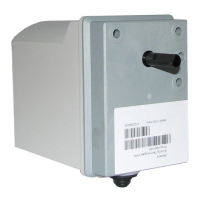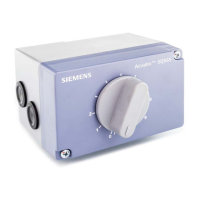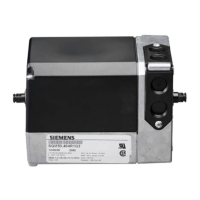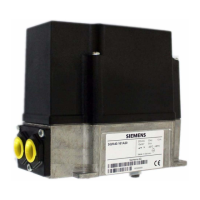
Do you have a question about the Siemens SQN72 Series and is the answer not in the manual?
| Brand | Siemens |
|---|---|
| Model | SQN72 Series |
| Category | Controller |
| Language | English |
Describes the use of SQN72/SQN73 actuators in HVAC systems for air and gas dampers.
Lists principal characteristics of the actuators including housing, terminals, and internal components.
Covers prevention of personal injury, property damage, and environmental harm.
Notes on preventing electric shock, ensuring touch protection, and avoiding ESD.
Advice on selecting the correct actuator version based on torque and mechanical design.
Compliance with regulations, avoiding solar radiation, and secure connections.
Ensuring IP54 rating is maintained through proper installation of drive shaft bearing.
Recommendations for shaft connections and managing bearing loads.
Compliance with wiring regulations, strain relief, and terminal protection.
Details on applied directives (Low Voltage, EMC) and relevant standards.
Information on expected service life based on start cycles and replacement criteria.
Guidance on unit replacement, function assignment, and proper waste management.
Materials, synchronous motor, reduction gear, camshaft, and switch sections.
Description of the synchronous motor and its disengageable coupling.
Cam disks for adjustment, scales, and internal position display.
Details on the maintenance-free gear and the drive shaft mounting.
Actuator suitability for potentiometer integration and separate ordering.
Mains voltage, frequency, motor, consumption, angle, position, and protection class.
IP54 details, fuse, cable entry, strain relief, and connection terminals.
Ferrules, direction of rotation, torque, and running times.
Number of switches, actuation method via camshaft, and fine adjustment.
Permissible current load per circuit and inductive load notes.
Temperature and humidity ranges for storage, transport, and operation.
Vibration and shock test standards applied to the actuator.
Motor-driven camshaft actuating switches, with optional electronic modules.
Explains diagram start position, end switch state, and general notes.
Circuit diagram and program sequence for LME22 in 2-stage or modulating mode.
Circuit diagram and program sequence for LOA/LMO controllers.
Circuit diagram and program sequence for LMO39 in 2-stage mode.
Circuit diagram and program sequence for LFL/LGK16/LAL/LOK16.
Circuit diagram and program sequence for LME22, type D.
Circuit diagram and program sequence for LAL/LFL/LGK16/LOK16, type E.
Measured dimensions of the actuator housing in millimeters.
Visuals and specifications for shaft side view, cross-section, and numbering.












